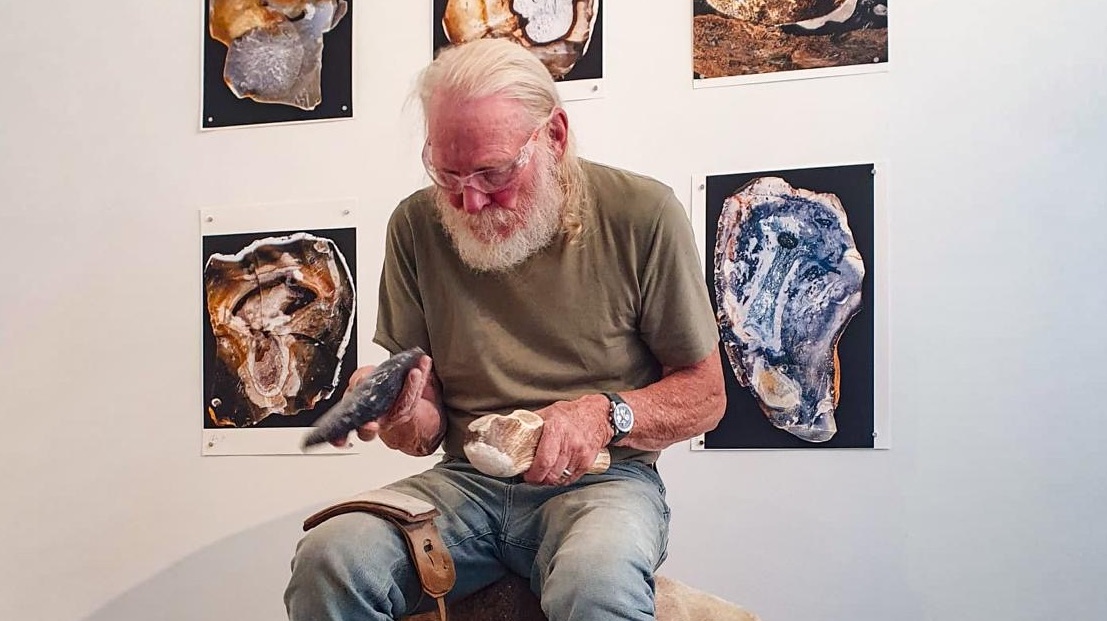By John Lord, By popular request – we have a second demonstration on the last day of the exhbition, Saturday 7 September 2.00 – 4.00
John Lord is a master flint-knapper, one of the best and most experienced in the world. To coincide with the display of his remarkable flint photographs, he will conduct a live demonstration of his craft.
We have to limit numbers for the workshop. so places must be booked in advance for a small fee.
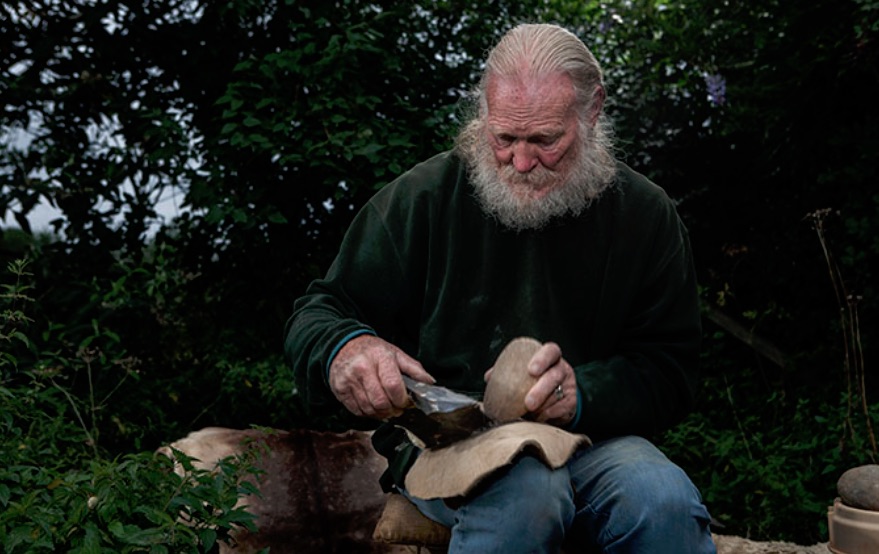
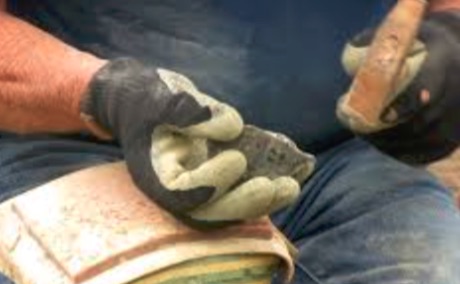

John Lord’s live flint-knapping demonstration
John will conduct a live flint-knapping workshop on Saturday September 7, the final day of his joint exhibition with Heavy Water Collective.
Booking
You must book a place in advance as space is limited. Tickets are £6.00 via Eventbrite:
https://www.eventbrite.co.uk/e/live-flintknapping-by-john-lord-tickets-966679342937
Live flint-knapping workshop 2.00 – 4.00 pm (ticketed)
Further information contact:
mail@groundworkgallerycom
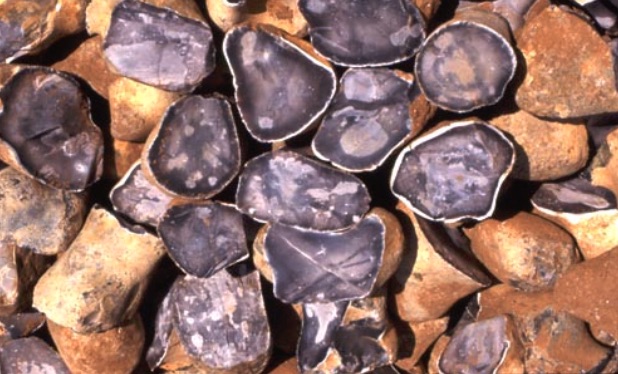
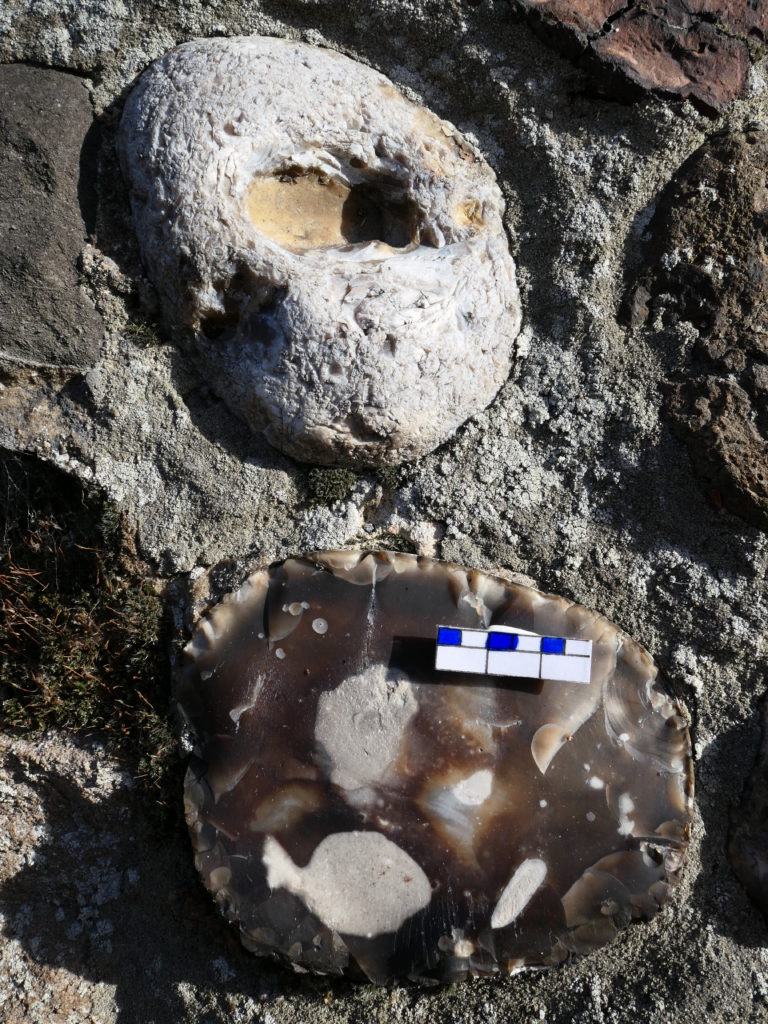
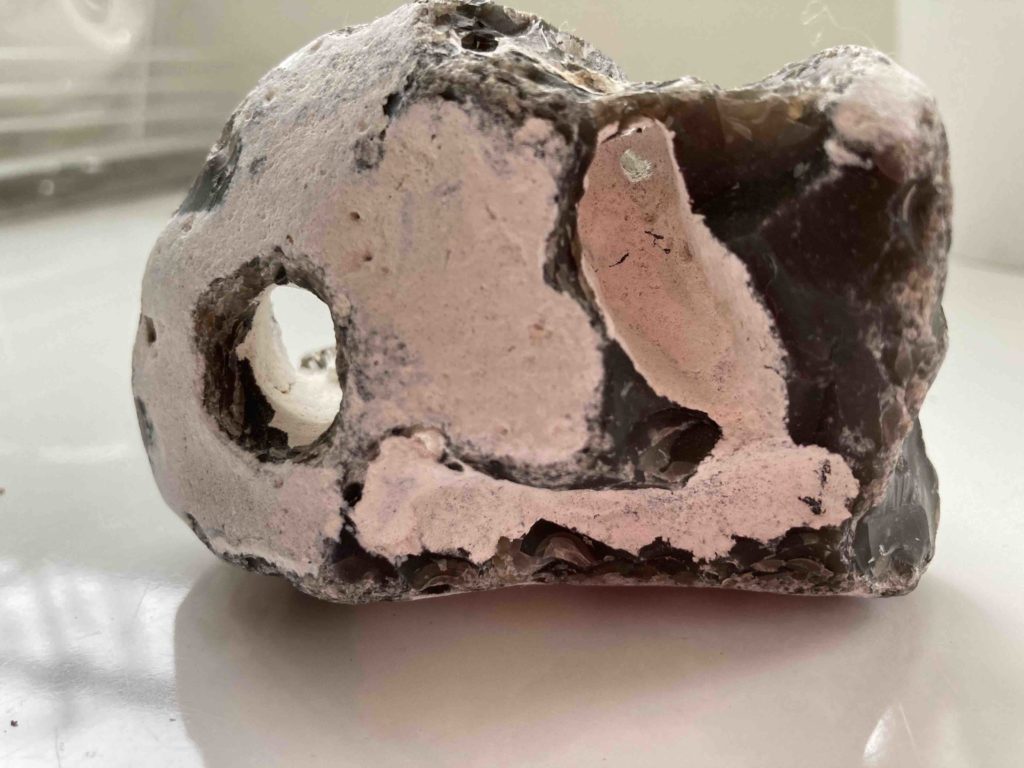
What is Flint?
Flint is a crystalline form of the mineral quartz. It was originally produced from water-bound living organisms such as sea-sponges or microscopic plankton known as diatoms or radiolarians existing in the Cretaceous period, 60-95 million years ago. These organisms used silica from sea water to form their skeletons. As their organic parts decayed, the skeletal remains on the sea bed caused a chemical reaction with the oxygen from the water above. Ultimately this meant that silica was precipitated ( ie transformed from a dissolved substance into an insoluble solid). Over a very long time, silica filled cavities on the sea bed, forming concretions (ie hard compact masses) which enveloped the decomposed organic matter. The silica dehydrated and hardened to form flint nodules. These nodules were embedded within sedimentary rocks such as chalk and limestone.
Chalk itself was formed by microscopic skeletons of plankton accumulated on the sea floor, forming a white mud. As the earth moved over tens of millions of years, flints could be locked within the chalk and also exposed and dislodged as separate nodules.
Flint has extraordinary durable qualities, making it suitable for building, But it is also friable and capable, with the right skill, of being chipped to make sharp implements and tools.

